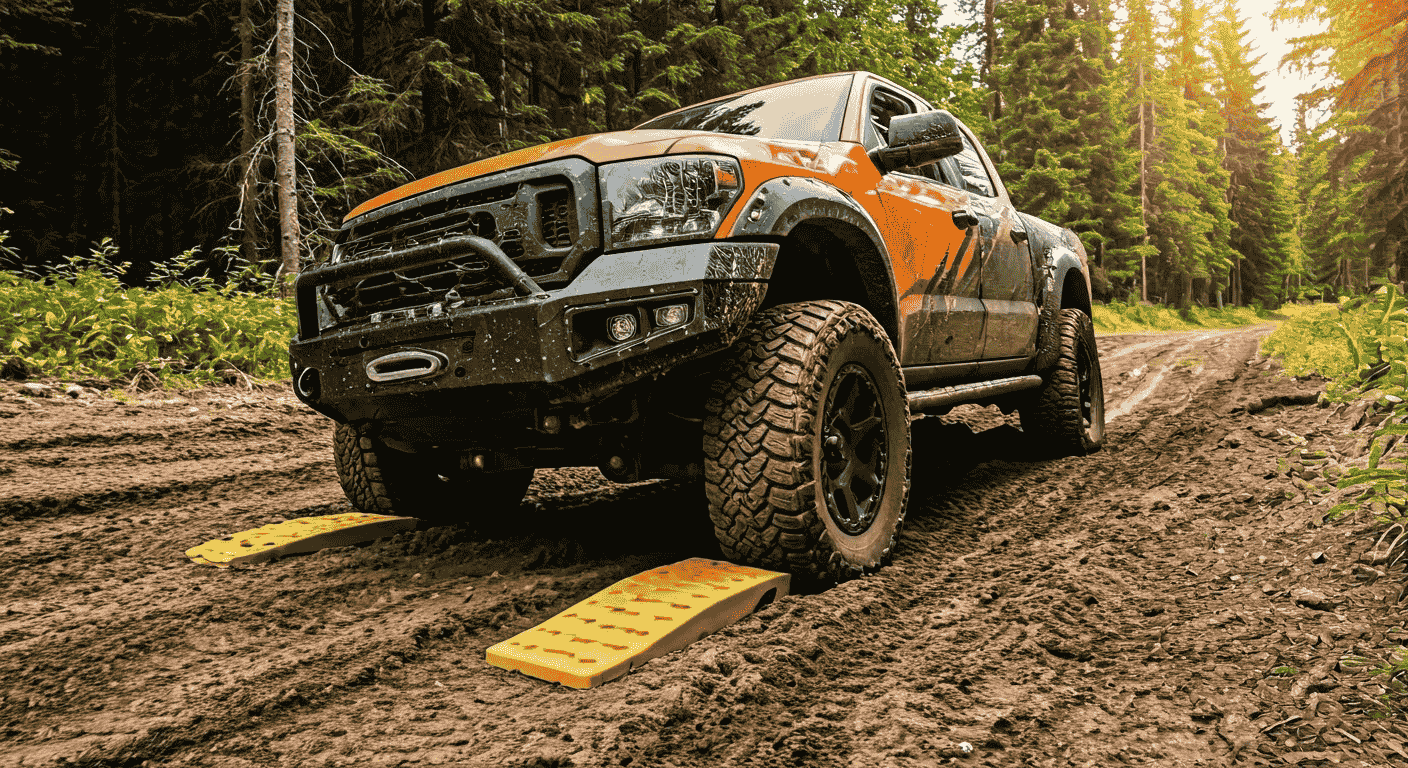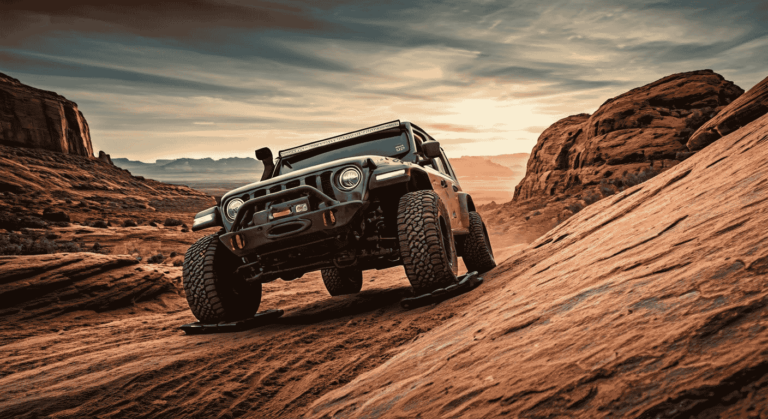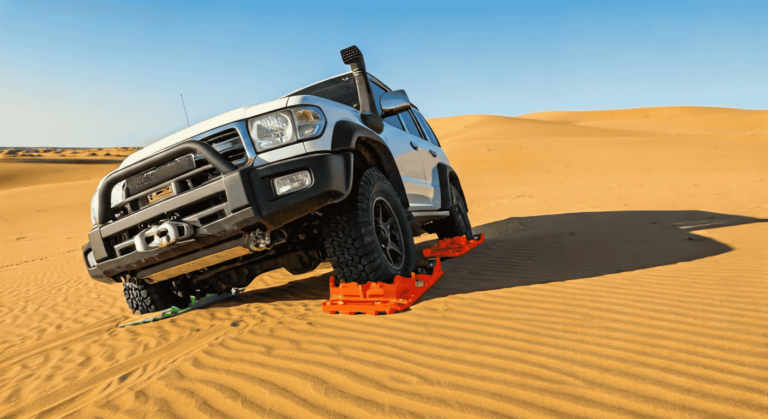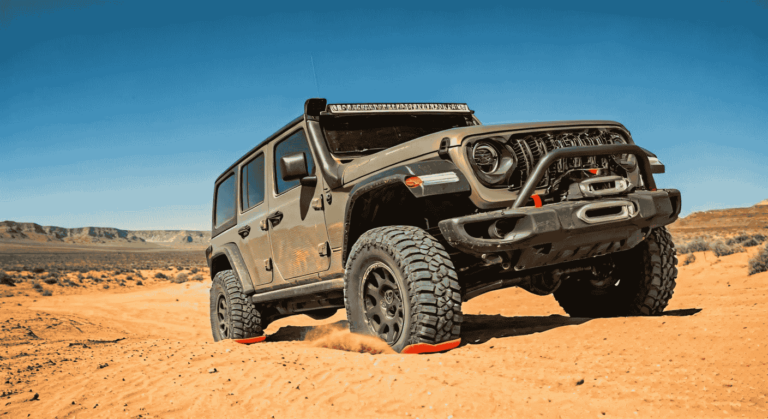Introduction
Navigating challenging off-road terrain often requires more than just grit and determination. Recovery traction boards are indispensable tools for drivers tackling sandy deserts, muddy trails, or snowy backroads. Placing them correctly is crucial to maximize their effectiveness, ensuring a safe and successful recovery. This guide will provide detailed insights into the optimal use and placement of recovery traction boards, helping you stay prepared for any situation.
Understanding the Importance of Recovery Traction Boards
Recovery traction boards are specifically designed to offer a reliable grip for tires that lose traction in soft, slippery, or uneven terrain. Unlike other recovery tools, such as winches or tow straps, traction boards operate without requiring assistance from another vehicle. By providing an immediate solution, they reduce the risk of further vehicle damage and allow drivers to regain momentum efficiently.
Common Scenarios Where Traction Boards Are Essential
- Sandy Terrain: Loose sand often causes tires to spin without grip. Traction boards create a firm surface for the tires to grip and climb out.
- Muddy Trails: After heavy rainfall, muddy trails become slick and difficult to traverse. Traction boards prevent tires from sinking further.
- Snow-Covered Roads: Icy or packed snow conditions can lead to vehicles slipping uncontrollably. Traction boards add friction and stability.
- Remote Areas: In remote or off-grid environments, traction boards are often the only self-recovery option.
Benefits of Proper Placement for Successful Recovery
- Increased Traction: Correctly aligned boards allow tires to gain maximum grip.
- Reduced Strain on Vehicle: Proper placement minimizes the risk of further tire spinning and mechanical damage.
- Enhanced Safety: Accurate use ensures drivers remain in control, reducing recovery time and preventing accidents.
Choosing the Right Recovery Traction Boards
- Materials and Durability – What to Look For: Select boards constructed from durable, reinforced materials such as UV-stabilized nylon or polymer composites. These materials withstand extreme temperatures and heavy vehicle loads. Additionally, opt for boards with aggressive tooth patterns for maximum traction.
- Size and Design Considerations for Different Terrains: Longer boards provide greater contact area, which is ideal for vehicles with larger tires or deeper recovery needs. Compact boards, on the other hand, are easier to store and transport. Some models feature dual-sided designs for specific terrains like snow or sand.
Top Brands and Models to Consider
- MAXTRAX
- TRED
- X-Bull
When to Use Recovery Traction Boards
- Identifying Signs of Being Stuck: Recognizing when your vehicle is immobilized is essential. Signs include excessive tire spinning, lack of forward movement, and sinking tires. Stop immediately to prevent further sinking or damage.
- Assessing Terrain Conditions: Sand, Snow, and Mud: Before deploying traction boards, evaluate the terrain. In sandy areas, clear loose sand from around the tires. On snow, break through ice layers if necessary. In muddy conditions, remove excess mud to create a clean base for the boards.
- Knowing When Not to Use Traction Boards: Avoid using traction boards on sharp or rocky terrain, as this may damage the boards. Additionally, if the vehicle is at risk of tipping or sliding, consider alternative recovery methods.
Preparation Before Placement
- Clearing the Area Around Your Tires: Use a shovel or your hands to remove debris, excess snow, or mud. Creating a smooth pathway for the boards enhances their effectiveness.
- Checking for Obstacles and Hazards: Inspect the surroundings for rocks, branches, or other obstructions that could interfere with the boards’ placement or the vehicle’s recovery.
- Gathering Necessary Tools for Efficient Recovery: Keep essential tools like gloves, a recovery shovel, and a tire deflator kit in your vehicle. These facilitate quicker and safer recovery operations.
How to Properly Place Your Recovery Traction Boards
- Positioning the Boards for Maximum Grip: Insert the leading edge of the traction boards beneath the tires that are losing traction. Ensure the boards are securely positioned at an angle that allows the tires to grip and climb onto them.
- Aligning with the Tire Path for Effective Recovery: Align the boards in the direction of intended movement. This prevents unnecessary lateral movement and increases traction.
Common Mistakes to Avoid When Placing Traction Boards
- Placing boards too far from the tires
- Failing to clear obstructions
- Attempting to accelerate aggressively instead of applying steady throttle
Using Traction Boards in Specific Terrains
- Recovering from Deep Sand – Best Practices: Deflate your tires to increase surface contact. Place the boards under the front tires if moving forward or the rear tires if reversing. Maintain gentle and consistent throttle input.
- Navigating Slippery Snow and Ice Safely: Position the boards for optimal grip on both tires. Clear snow from under and around the tires to ensure contact. Consider using additional traction aids like sand or snow chains.
- Escaping Mud and Wet Ground Without Spinning Tires: In muddy terrain, reduce tire pressure slightly. Avoid excessive acceleration. Slowly drive onto the boards while maintaining traction.
Solo Recovery Tips with Traction Boards
Step-By-Step Guide for Single-Person Recovery
- Assess the situation and clear the area.
- Position the boards correctly under the tires.
- Engage 4WD or traction control.
- Apply steady throttle to move onto the boards.
- Leveraging Vehicle Features Like Traction Control: Modern vehicles often feature traction control systems that improve recovery success. Disable traction control momentarily if necessary for better control.
- Safety Precautions for Solo Vehicle Recovery: Always wear gloves and eye protection. Ensure the area is clear of bystanders and maintain situational awareness.
Recovery with Assistance: Coordinating with Others
- Effective Communication During Recovery: Use clear and concise hand signals or two-way radios to maintain communication with spotters.
- Role of Spotters in Placing Traction Boards: A spotter can assist in proper placement and alignment. They provide visibility on obstacles and ensure the boards remain in place during recovery.
- Preventing Damage with Controlled Recovery Techniques: Apply gentle throttle pressure to minimize strain on the drivetrain. Avoid spinning tires excessively.
Post-Recovery Best Practices
- Inspecting Traction Boards for Damage: Check for cracks, deformation, or excessive wear. Damaged boards may compromise future recoveries.
- Cleaning and Maintaining Your Boards for Longevity: Rinse boards with water to remove mud, sand, or debris. Store them in a protective bag or case to prevent UV damage.
- Storing Your Traction Boards for Easy Access: Mount boards on exterior roof racks, tire carriers, or dedicated storage brackets for quick deployment.
Additional Tips and Considerations
- Using Traction Boards Alongside Other Recovery Gear: Combine traction boards with tools like recovery straps, winches, or snatch blocks for more challenging recoveries.
- When to Call for Professional Recovery Assistance: If the terrain or vehicle damage is severe, consider contacting a professional recovery service.
- Lessons Learned: Real-Life Recovery Stories: Experienced off-roaders often share invaluable recovery insights. Learning from their stories can help you better prepare for your own adventures.
Conclusion
Proper placement of recovery traction boards is a fundamental skill for any off-road enthusiast. By understanding terrain conditions, using the right techniques, and maintaining your equipment, you can ensure safe and successful recoveries. Practice regularly and equip your vehicle thoughtfully to stay ready for whatever challenges lie ahead. Happy trails!




